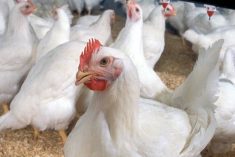A new report on water and agriculture identifies many areas where research could improve sustainable water management in agriculture.
A 15 member panel convened by the Council of Canadian Academies outlines in more than 200 pages how further studies into uncertain market conditions in changing climates, beneficial management practices and investments in new farm-scale technologies could address concerns of food security and health of water supplies.
“I think one of the points that we try and make is that relationship between agriculture and water is very multifaceted,” said panel chair Howard Wheater, who also heads the University of Saskatchewan’s Global Institute for Water Security.
Read Also

New opportunities for Canadian goods in Mexico
Agriculture minister’s trip to Mexico sees promotion of Canadian goods like beef and canola, with potential for more partnerships in the future
“You can’t just pick one area and say you need to do this.”
The report, Water and Agriculture in Canada: Towards Sustainable Management of Water Resources, came at the request of Agriculture Canada.
It was published last week and is in the hands of Agriculture Canada, offers
“The science can be done with appropriate resources, but ultimately it’s decisions that are being made by people and politicians that are going to change the future,” said Wheater.
The report’s research priorities include improved water and nutrient productivity in crop and livestock production, disease resistance, precision agriculture and pesticide and fertilizer formulation.
The report may contain few surprises, but Wheater said there’s value in gathering the information into one comprehensive document.
“What was new to me, and a surprise I suppose, was the potential from technological developments,” said Wheater.
The report recommends further exploration of autonomous systems to more efficiently use inputs and reduce waste.
“It’s an area of mechanization that’s continuing to evolve at quite a rapid pace,” said Jim Wasserman of the Prairie Agricultural Machinery Institute, which conducted its own “vision session” with stakeholders in November.
The exercise identified a significant interest in automatic steering, GPS technology, robotics and automation.
“We’d like to increase our involvement in the (research and development) side, as well as the evaluation side of the automation that’s making its way into agricultural machines,” Wasserman said.
The panel’s report also recommends further exploration of genetically modified seeds and biotechnology to improve yields and nutrient productivity and reduce the risk and use of pesticides.
Wheater said there is great potential for producers to feed a growing world population, which relies on more water-intensive food, but production must also be weighed with the health of waterways.
“You need local solutions for local problems. Beneficial management practices can do significant good in enhancing the quality of our water and the environment,” said Wheater.
“We need to understand better their effects at local and larger scales.”
He highlighted farmland drainage and nutrient management in Western Canada, using the example of phosphorus levels and algal blooms in Lake Winnipeg.
“The issues of nutrient management are really important if we want to maintain the quality of the environment that Canadians value so much,” he said.
“Then we have to find more effective ways of minimizing the agricultural and urban impacts on those systems.”














